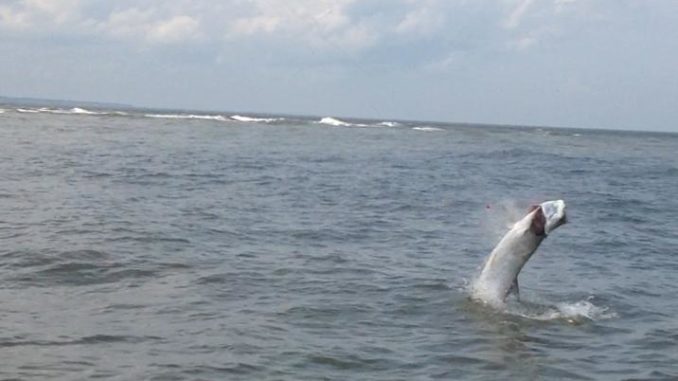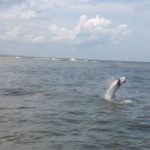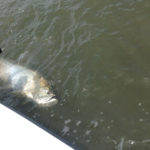
Ocean, river, cape are spots to tangle with a powerful tarpon
When most fishermen hear the words “Cape Fear,” they think of the river that enters the ocean at Southport, not the cape about 5 miles to the east where the beach at Bald Head Island bends 90 degrees and Frying Pan Shoals separates Long Bay from Onslow Bay.
Both locations are important to tarpon fishing in the area. In the ocean, the waters of Onslow Bay are cleaner and have a green color, a direct contrast to the effluent-laden, brown water that flows from the river into Long Bay. Tarpon appear to prefer the cleaner waters of Onslow Bay, but the waters around the mouth of the river hold much more forage, so the big fish are frequently found there, too.
A small but consistent fishery exists in the sloughs that cross Frying Pan Shoals and the deeper ocean waters for several miles on each side. The primary technique involves floating live baits and soaking chunks of cut bait on the bottom, especially where the water begins to deepen at each end of the sloughs, but many tarpon are incidentally hooked while trolling live baits for king mackerel. Menhaden and mullet serve as both the live and cut baits.
Tarpon are also caught a few miles inside the mouth of the river, behind Bald Head Island. A slough of hard, flowing water shortcuts the river channel and wraps around the edge of Bald Head Island and Shellbed Island. Fishermen work this slough the same way they do in the ocean. For years, this fishery was considered a late-afternoon and after-dark fishery, but for the past few years, rolling tarpon have been seen there during day-time hours.
Fishermen now believe the right tide is more important than time of day, but if that tide happens to be in the late afternoon or early morning, it might be even better. The preferred tide is rising somewhere around halfway high, through high tide and back to halfway low tide on the falling tide. Extreme high tides around the full moons in July and August are generally considered the best opportunities, but tarpon may move through this area any time from late June into mid-September. Most range from about 60 to 125 pounds, but there have been a few estimated to more than 150.
Fly-fishing opportunities were realized last year when Jon Huff of Circle H Charters in Wrightsville Beach guided Bill Rustin of Southport to the first fly-caught tarpon in the area. They repeated the feat a few weeks later, and Huff had another client boat one and had several more clients hook fish on a fly that broke off or pulled the hooks.
Huff’s favorite fly for Cape Fear River tarpon is a peanut butter (purple/black) toad fly; it produced all of his clients’ tarpon hookups last year. Huff estimated Rustin’s first fly tarpon at around 125 pounds, the largest boated.
The full moon this month is Aug. 18. Huff, Rustin and several other dedicated anglers are looking to add more tarpon notches to their rods.







Be the first to comment